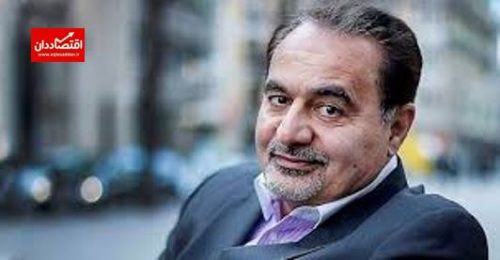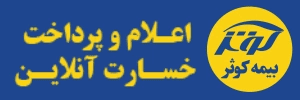اقتصاددان : دکترسید حسین موسویان استاد دانشگاه پرینستون مذاکرات هستهای ایران و آمریکا: توافق برد-برد میتواند از جنگ جلوگیری کند
گزارشها حاکی از آن است که دور چهارم مذاکرات هستهای میان ایران و آمریکا قرار است آخر هفتهی جاری در عمان برگزار شود. سه دور پیشین مذاکرات که در ماه گذشته در مسقط و رم انجام شد، سازنده به نظر میرسید و دو طرف را به مواضع مشترک نزدیکتر کرد.
دونالد ترامپ، رئیسجمهور آمریکا، ابراز اطمینان کرده است که «توافقی حاصل خواهد شد»، و اظهار داشته که بازرسیهای تقویتشده میتوانند مانع از دستیابی ایران به بمب اتمی شوند. او گفت: باید ده برابر راستیآزمایی شود.
این رویکرد و پیشرفت مذاکرات، خشم اسرائیل را برانگیخته، بهطوریکه بنیامین نتانیاهو، نخستوزیر این رژیم، اعلام کرده تنها «مدل لیبی» قابل قبول است – مدلی که منجر به برچیدن کامل برنامه هستهای و سپس دخالت نظامی و نابودی آن کشور شد.
روزنامه واشنگتن پست گزارش داده است که یکی از دلایل برکناری مشاور امنیت ملی ترامپ، مایکل والتز، گفتوگوی او با نتانیاهو درباره سناریوهای احتمالی حمله نظامی به ایران بوده است.
در همین حال، مارکو روبیو، وزیر خارجه آمریکا، هفته گذشته در یک مصاحبه تلویزیونی گفت که ایران «تنها کشور غیرهستهای در جهان است که اورانیوم غنی میکند» و بنابراین باید برنامهاش را کنار بگذارد. ترامپ نیز خواستار «برچیدن کامل» برنامه هستهای ایران شد و استدلال کرده است که ایران «آنقدر نفت دارد که نیازی به انرژی هستهای ندارد».
با توجه به آشفتگیهای سیاسی کنونی در واشنگتن، بهنظر میرسد شانس ترامپ برای دستیابی به توافق هستهای با ایران رو به کاهش است و تمامی مسیرهای آشتی احتمالی در حال بسته شدن هستند.
با این حال، او هنوز یک فرصت تاریخی در اختیار دارد – فرصتی که میتواند تضمین کند ایران هرگز به بمب هستهای دست نیابد و راه را برای بهبود روابط میان تهران و واشنگتن هموار سازد. تحقق چنین نتیجهای مستلزم درک واقعبینانه از چهار واقعیت بنیادین است:
ضرورت اصلاح چهار اشتباه آمریکا در مورد تأسیسات غنیسازی
اول، هر توافق هستهای باید بر پایه پیمان عدم اشاعه سلاحهای هستهای (NPT) باشد. ماده چهار این پیمان، «حق انکارناپذیر همه طرفهای عضو برای توسعه تحقیق، تولید و استفاده صلحآمیز از انرژی هستهای بدون تبعیض» را به رسمیت میشناسد و بیان میکند که تمامی طرفها متعهد به تسهیل تبادل تجهیزات، مواد، و اطلاعات علمی و فنی برای استفاده صلحآمیز از انرژی هستهای هستند.
دوم، کشورهای غیردارنده بمب هستهای متعددی که عضو NPT هستند – از جمله ژاپن، برزیل و آلمان – دارای تأسیسات غنیسازی هستند.
سوم، این خود آمریکا بود که پیش از انقلاب ۱۳۵۷ بنیانهای صنعت هستهای ایران را گذاشت؛ در آن زمان، شاه چشمانداز ساخت ۲۰ نیروگاه هستهای تا سال ۱۹۹۴ را در نظر داشت. بنابراین، این استدلال که ذخایر نفتی ایران نیاز به انرژی هستهای را منتفی میکند، نادرست است.
بهویژه آنکه امارات متحده عربی – یکی از متحدان آمریکا و تولیدکنندگان بزرگ نفت – با جمعیتی حدود یکدهم ایران، چهار راکتور هستهای فعال دارد، در حالی که ایران تنها یک راکتور دارد. همچنین آمریکا در حال مذاکره با عربستان سعودی برای ایجاد صنعت غنیسازی هستهای است، در حالی که این کشور نیز از بزرگترین تولیدکنندگان نفت جهان است.
چهارم، در نهایت، در پاسخ به پیشنهاد روبیو مبنی بر واردات سوخت هستهای: من در مذاکرات هستهای با کشورهای اروپایی در اواخر دهه ۱۹۸۰ و اوایل دهه ۱۹۹۰ حضور داشتم. در آن دوران، ایران آماده بود که از برنامه های گسترده هستهای شاه صرفنظر کند و غنیسازی را کنار بگذارد، مشروط بر آنکه آمریکا سوخت راکتورها را تأمین کند و کشورهای اروپایی به تعهدات قبل از انقلاب خود در تأمین راکتور و سوخت عمل کنند. اما آمریکا این پیشنهاد را رد کرد و ایران را به سمت خودکفایی در تولید سوخت هستهای سوق داد.
پنج اصل برای یک توافق واقعبینانه هستهای
راهحل واقعبینانه امروز شامل پنج مؤلفه است:
1- نگرانی اصلی در مورد برنامه هستهای ایران، غنیسازی اورانیوم تا سطح ۶۰ درصد است که به آستانه تولید سلاح هستهای نزدیک میشود. کاهش این سطح به کمتر از پنج درصد، میتواند این نگرانی را رفع کند.
2- مسئله کلیدی، همکاری ایران با آژانس بینالمللی انرژی اتمی (IAEA) است. اجرای پروتکل الحاقی، که ابزارهای ویژهای برای راستیآزمایی در اختیار آژانس قرار میدهد، توان نظارتی آن را بر استفاده صلحآمیز از مواد هستهای در ایران افزایش خواهد داد.
3- نگرانی مهم دیگر، مربوط به ذخایر بیش از ۲۷۰ کیلوگرمی اورانیوم غنیشده ۶۰ درصدی ایران است – مقداری که برای ساخت حدود شش بمب هستهای کفایت میکند. موافقت ایران با صادرات یا تبدیل این ذخایر، میتواند نگرانیها را کاهش دهد. همچنین، دو کشور میتوانند توافق کنند که ایران فقط به اندازه مصرف داخلی سوخت هستهای نگه دارد و مازاد آن را صادر کند.
4- در صورت برگزاری دور چهارم، دو طرف میتوانند درباره تمدید محدودیتهای خاصی در برنامه هستهای ایران – معروف به «بندهای غروب» – مذاکره کنند تا نگرانیها درباره احتمال دستیابی ایران به سلاح هستهای در آینده رفع شود.
5- آمریکا نیز بهطور واقعی در زمینه رفع تحریمها عمل کند.
یکی از فشارهای سیاسی وارد بر ترامپ آن است که باید توافقی بهتر از باراک اوباما، رئیسجمهور پیشین، بهدست آورد. اما واقعیت این است که خروج ترامپ از توافق هستهای در سال ۲۰۱۸، میلیاردها دلار خسارت به ایران وارد کرد. در یک توافق منصفانه جدید، این خسارات باید جبران شوند – گرچه بعید است آمریکا با چنین بندی موافقت کند.
دیدار روسای جمهور ایران و آمریکا
قرار است ترامپ در اواسط ماه مه سفری به عربستان، قطر و امارات داشته باشد. گفته میشود محمد بن سلمان قصد دارد سران شش کشور عضو شورای همکاری خلیج فارس (GCC) را به جلسهای مشترک با ترامپ دعوت کند. بن سلمان میتواند دیگر رهبران منطقهای را نیز برای بحث درباره امنیت منطقه دعوت کند.
در حاشیه این دیدار، او همچنین میتواند دیداری میان ترامپ و رئیسجمهور پزشکیان هماهنگ کند تا اصول توافقشده در سه دور مذاکرات میان عباس عراقچی و استیو ویتکوف به امضای نهایی دو رئیسجمهور برسد.
گزینه دیگر، آن است که پادشاه عمان یا امیر قطر ابتکار عمل را به دست گرفته و دیداری میان روسای جمهور ایران و آمریکا را در مسقط یا دوحه ترتیب دهند.
گام نهایی برای یک توافق بزرگ
نهایت، تهران و واشنگتن باید برای مذاکره بر سر یک دستورکار جامع جهت رفع تمامی تحریمهای آمریکا ، اعم از تحریمهای اولیه یا ثانویه، توافق کنند – با همکاری در حوزههای کلیدی شامل:
الف) یک معاهده رسمی دوجانبه هستهای که وضعیت غیردارنده بمب هستهای ایران را تأیید کند؛
ب) همکاری گسترده اقتصادی؛
ج) میانجیگری آمریکا برای توقف تقابلات نظامی-امنیتی میان ایران و اسرائیل؛
د) گفتوگو برای حل مناقشات منطقهای بر پایه به پذیرش متقابل منافع مشروع یکدیگر؛ و
ه) نقشه راهی برای کاهش تنشها و خصومت ها و بازسازی روابط دیپلماتیک.
این چارچوب میتواند شانس موفقیت دیپلماسی را افزایش داده و از گرفتار شدن آمریکا در یک جنگ ویرانگر دیگر جلوگیری کند.
US-Iran nuclear talks: A win-win deal could avoid war
8 May 2025
https://www.middleeasteye.net/opinion/us-iran-nuclear-talks-how-deal-can-be-made
Despite political turmoil in Washington and rising tensions with Israel, there is a clear path towards an agreement – if both sides are willing.
This framework would increase the chances of success in diplomacy, and help to prevent the US from being drawn into another devastating war
A fourth round of nuclear talks between Iran and the US is reportedly set to take place this coming weekend in Oman. Three previous rounds of negotiations in Muscat and Rome last month appeared constructive, bringing the two sides closer to common ground.
US President Donald Trump has expressed confidence that “a deal is going to be made”, noting that enhanced inspections could prevent Iran from obtaining a nuclear bomb: “You have to verify times 10.”
This policy direction and the progress in talks have angered Israel, with Prime Minister Benjamin Netanyahu declaring that only the “Libya model” would be acceptable – a scheme that dismantled the state’s nuclear programme and paved the way for military intervention and the country’s destruction.
According to a report in the Washington Post, Trump’s decision to dismiss his national security adviser, Michael Waltz, was based in part on the latter’s decision to discuss with Netanyahu possible scenarios in which military strikes on Iran might be carried out.
Meanwhile, Secretary of State Marco Rubio said in a televised interview last week that Iran was “the only non-[nuclear-]weapon country in the world that’s enriching uranium”, and Tehran should therefore abandon its programme. Trump has since demanded a “total dismantlement” of Iran’s nuclear programme, arguing that Iran has “so much oil” that it does not need nuclear energy.
Bottom of Form
It is evident that with the ongoing political chaos in Washington, Trump’s chances of securing a nuclear deal with Iran are diminishing, with all doors to a possible rapprochement at risk of closing.
But he still has a historic opportunity to reach a deal – one that could guarantee Iran never obtains a nuclear bomb, and pave the way for improved relations between Washington and Tehran. Such an outcome would require a realistic understanding of four basic facts.
Enrichment facilities
Firstly, the basis of any nuclear agreement must be grounded in the Non-Proliferation Treaty (NPT). Article IV affirms “the inalienable right of all the Parties to the Treaty to develop research, production and use of nuclear energy for peaceful purposes without discrimination”, and notes that all parties “undertake to facilitate, and have the right to participate in, the fullest possible exchange of equipment, materials and scientific and technological information for the peaceful uses of nuclear energy”.
Secondly, several non-nuclear-weapons states that are parties to the NPT, including Japan, Brazil and Germany, have enrichment facilities.
Thirdly, it was the US that laid the foundations for Iran’s nuclear industry before the 1979 revolution, as the shah envisioned 20 nuclear power plants by 1994. The argument that Iran’s oil reserves negate the need for nuclear energy is thus flawed.
Notably, the UAE – a US ally and major oil producer with a population about one-tenth the size of Iran – operates four nuclear reactors, while Iran operates only one. Moreover, Washington is negotiating with Saudi Arabia on a nuclear enrichment industry, despite the latter being one of the world’s top oil producers.
Finally, with regards to Rubio’s suggestion that Iran could simply import nuclear fuel: I was involved in nuclear talks with European countries in the late 1980s and early 1990s. During that period, Iran was ready to abandon its large-scale nuclear ambitions, and to refrain from enrichment if the US provided reactor fuel, and European countries honoured their pre-revolution contracts to provide reactors and fuel. But the US rejected the offer, pushing Iran towards self-sufficiency in nuclear fuel.
A realistic nuclear deal
A realistic solution today would involve several components.
The main concern regarding Iran’s nuclear programme is its 60-percent enrichment levels, which are approaching weapons-grade. Reducing that level to below five percent would address this concern.
The second key issue involves Iran’s cooperation with the International Atomic Energy Agency (IAEA). Implementing the Additional Protocol, which provides specific tools for verification, would increase the IAEA’s ability to ensure the peaceful use of all nuclear materials in Iran.
The third critical concern is Iran’s stockpile of more than 270 kilogrammes of 60-percent-enriched uranium, enough for about six nuclear bombs. Iran’s agreement to export or convert this stockpile would alleviate fears. Additionally, Iran and the US could agree that Iran retains produced nuclear fuel only for domestic consumption, exporting any surplus.
In their upcoming fourth round of talks, if indeed they happen, the US and Iran could also potentially negotiate an extension to certain restrictions on Iran’s nuclear enrichment programme – known as the “sunset provisions” – to conclusively address concerns about Iran’s potential access to nuclear weapons, provided the US reciprocates with genuine sanctions relief.
Some of the pressure on Trump is based on the idea that he must make a better deal than former President Barack Obama did. The truth is that by withdrawing from the nuclear deal in 2018, Trump caused billions of dollars in damage to Iran. In a fair new deal, these damages would be compensated – but the US would not likely agree to such provisions.
President Trump is scheduled to make a trip to Saudi Arabia, Qatar, and the UAE in mid-May. It has been said that Mohammad bin Salman will invite the leaders of the six GCC member states for a joint meeting with Trump. Bin Salman can invite other regional leaders to discuss the security of this region.
In addition, on the sidelines of this meeting, he could also coordinate a meeting between President Trump and President Pezeshkian so that the principles agreed in three rounds of nuclear talks between Abbas Araghchi and Steve Witkoff can be signed by the two presidents.
The next alternative is for the king of Oman or Emir of Qatar to initiate and coordinate the meeting between the Presidents of Iran and the United States in Muscat or Doha.
Ultimately, Tehran and Washington should agree to negotiate on a comprehensive agenda to lift all US sanctions, with cooperation across several core areas: a formal bilateral nuclear treaty confirming Iran’s status as a non-nuclear-weapons state; broad economic collaboration; US mediation to resolve tensions between Israel and Iran; dialogue to resolve regional conflicts based on mutual recognition of legitimate interests; and a roadmap towards regional de-escalation and a rebuilding of diplomatic relations.
This framework would increase the chances of success in diplomacy, and help to prevent the US from being drawn into another devastating war.
مخاطب گرامی، ارسال نظر پیشنهاد و انتقاد نسبت به خبر فوق در بخش ثبت دیدگاه، موجب امتنان است.
ع








